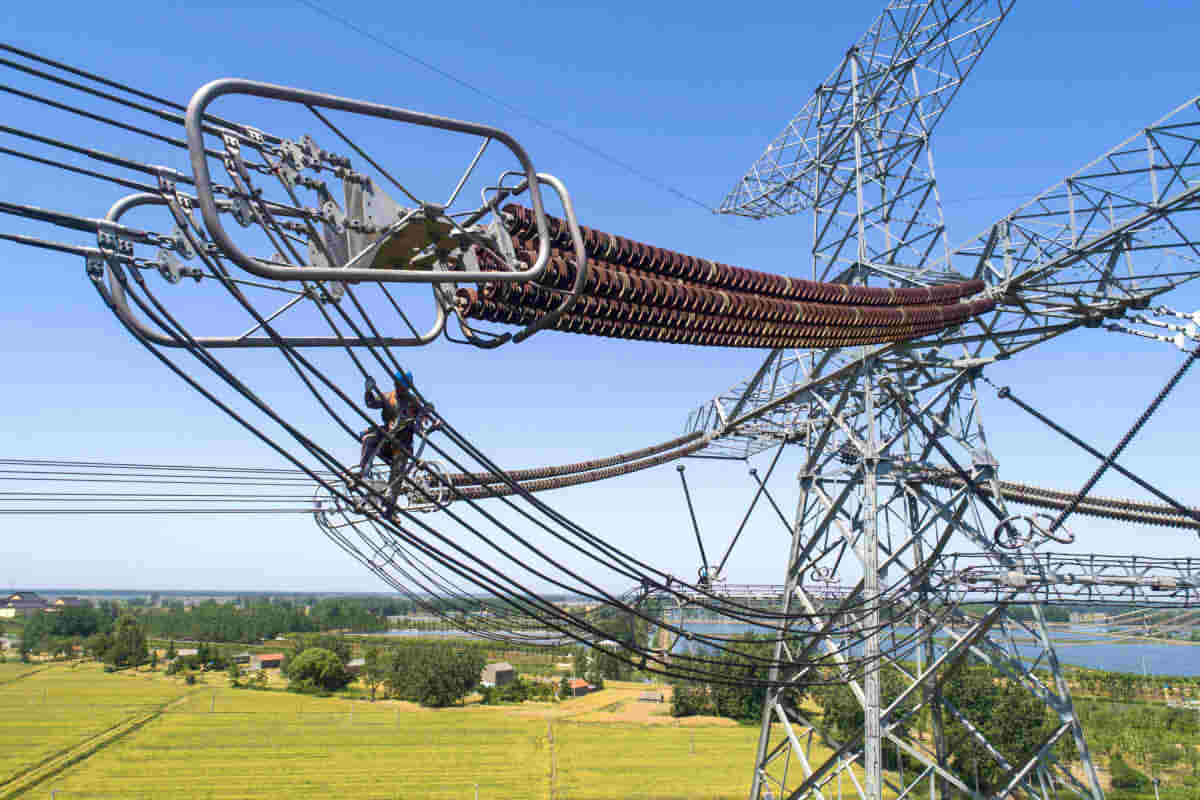The market for aerial aluminum conductors is an essential component of the electric power transmission and distribution industry.. It is made up of products such as insulated conductors, bare overhead conductors and accessories used in the construction and maintenance of overhead transmission lines. In recent years, this market has experienced steady growth and is expected to maintain a compound annual growth rate (CAGR) of 4% during the forecast period from 2022 until 2032. It is expected to reach USD 1259.4 million in that period.
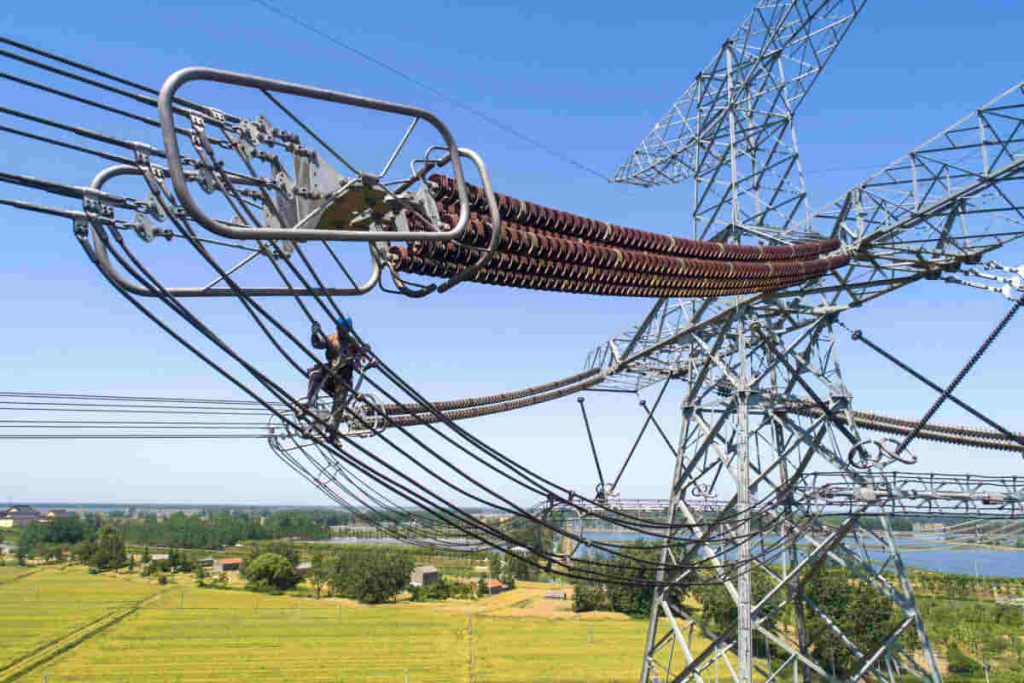
Table of Contents
- Segmentation of the Airborne Aluminum Conductor Market: By type
- Segmentation of the Airborne Aluminum Conductor Market: By Voltage
- Regional Distribution
- Dynamics of the Airborne Aluminum Conductor Market
- Future of the Airborne Aluminum Conductor Market
Segmentation of the Airborne Aluminum Conductor Market: By type
The aerial aluminum conductors market is classified based on product type in AAC (Pure Aluminum Conductor), AAAC (Pure Aluminum Alloy Conductor), ACSR (Aluminum Conductor with Steel Reinforcement), OPENS (Reinforced Aluminum Alloy Conductor) and others.
ACSR conductors segment is expected to dominate the market in the forecast period due to its extensive use as steel core in ACSR conductors., which provides excellent mechanical strength and efficiency to withstand mechanical stress and high tension. This resistance improves the life of the support structures. High voltage segment is expected to grow with high CAGR during the forecast period.
Types of Aerial Cables
AAC (Pure Aluminum Conductor)
AAC cables are composed of pure aluminum, which is light and has good conductivity, and are commonly used for low and medium voltage transmission and distributed distribution.
AAAC (Pure Aluminum Alloy Conductor)
The AAAC cable is composed of pure aluminum alloy with high resistance, light weight and good conductivity, commonly used in distributed streaming.
ACSR (Aluminum Conductor with Steel Reinforcement)
The ACSR cable consists of aluminum and stranded steel wire and is commonly used for transmission lines. For example, ACSR 400/51 represents a cross section of aluminum 400 mm² y 51 steel cores.
OPENS (Reinforced Aluminum Alloy Conductor)
ACAR conductors are made of aluminum alloy and are lighter in construction than ACSR conductors, and are commonly used in medium and high voltage transmission and in urban networks. For example, OPENS 180/25 represents a cross section of aluminum alloy 180 mm² y 25 steel cores.
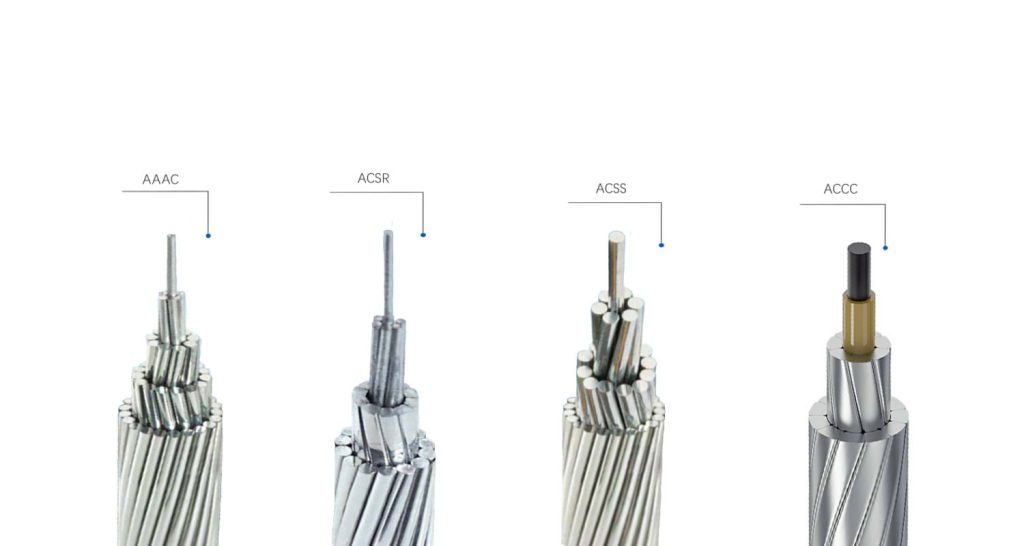
ACS
ACS cables are made of aluminum alloy and steel wire with better corrosion resistance and electrical conductivity, They are lighter and have a longer life than ACSR and ACAR. ACS models are typically used for low and medium voltage transmission lines and energy access networks.
ACSS
ACSS cables are aluminum alloy and steel core helical cables, Mainly used in transmission lines in high temperature areas and environments where high loads are required to be transported. ACSS has high electrical conductivity and corrosion resistance, as well as a certain degree of flexibility and durability, and is suitable for long spans and vertical line support.
ACCC
The ACCC conductor It is an aluminum conductor with a carbon fiber core, which is light, elongation resistant and thermally stable. Mainly used to replace ACSR cables in original transmission lines and new long-range transmission lines.
Comparison of Types of Aerial Cables
- AAC vs. AAAC: Compared to AAAC, AAC conductors are flexible and can accommodate curved shapes, but they are less robust and are not suitable for long distance transmission. AAAC conductors are strong and suitable for high voltage transmission, but they are less flexible and cannot accommodate curves.
- ACSR vs. AAC and AAAC: ACSR has better strength and corrosion resistance compared to AAC and AAAC and is suitable for long-distance transmission lines, but it is heavier and more expensive to install and maintain.
- ACAR against ACSR: ACAR is lighter than ACSR and can support higher loads.** ACAR is lighter than ACSR and can support higher loads. It also has high electrical conductivity and some flame retardant properties..
Segmentation of the Airborne Aluminum Conductor Market: By Voltage
Overhead Aluminum Conductor Market is Classified Based on Voltage Levels, including:
- Low voltage: Up to 220/380V (0.4kV)
- Medium Voltage: 3kV, 6kV, 10kV, 20kV
- High voltage: 35kV, 66kV, 110kV, 220kV, 330kV, 500kV
High voltage segment is expected to dominate the market during the forecast period. This is due to the increase in the use of high voltage transmission lines, especially above 100 kV.
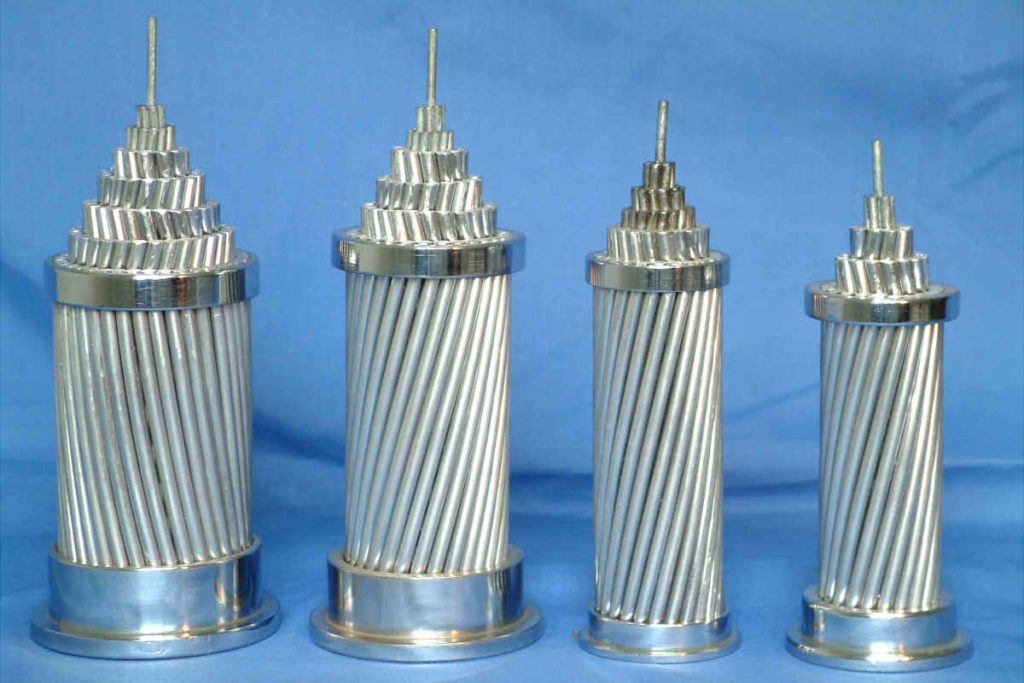
Los aluminum conductors of cables They are used in high voltage connections due to their benefits, like better performance, profitability and environmental sustainability. The use of overhead aluminum conductors for high voltage transmission aims to reduce energy loss in transmission lines and their cost.. Usually, the greater the height above the ground, the higher the voltage level of the overhead wire.
These high voltage overhead lines They are essential for the interconnection of energy generation sources, long-distance power transmission and regional grid integration.
Regional Distribution
The aerial aluminum conductor market is widely distributed throughout the world.. Regions such as Asia Pacific and North America show increased demand for electric services, which is reflected in a larger market size. Besides, Emerging markets and developing countries are gradually increasing their investment in electricity infrastructure, which creates growth opportunities in these places.
Pacific Asia
This region emerges as one of the most prominent drivers in the aerial aluminum conductor market. Sustained economic growth and rapidly expanding urbanization in countries such as China and India have generated insatiable demand for electricity. Besides, Efforts to electrify rural areas and the push towards renewable energy sources are further fueling the need for aluminum conductors for the expansion of electrical grids.
North America
This region presents a mature market in terms of electrical infrastructure, but still experiences a constant demand for overhead aluminum conductors. Modernization of existing networks and increasing adoption of clean energy technologies, such as wind and solar energy, drive the need for high-performance, high-strength conductors.
Europa
Europa, with its focus on sustainability and reducing carbon emissions, is seeing an increase in investment in smart grids and renewable energy projects. This results in continued demand for aluminum conductors that can withstand the demands of modern, efficient power grids..
Emerging markets
Africa's developing regions, Latin America and the Middle East are gradually increasing their investments in electrical infrastructure. These emerging markets, often characterized by a lack of access to electricity in rural areas, are seeing an increase in the construction of transmission and distribution lines, which, at the same time, drives demand for overhead aluminum conductors.
Dynamics of the Airborne Aluminum Conductor Market
The Overhead Aluminum Conductor Market is an Ever-Changing Business Environment, driven by a number of key factors that influence its direction and growth. These factors are divided into drivers that stimulate growth and constraints that may limit market development..
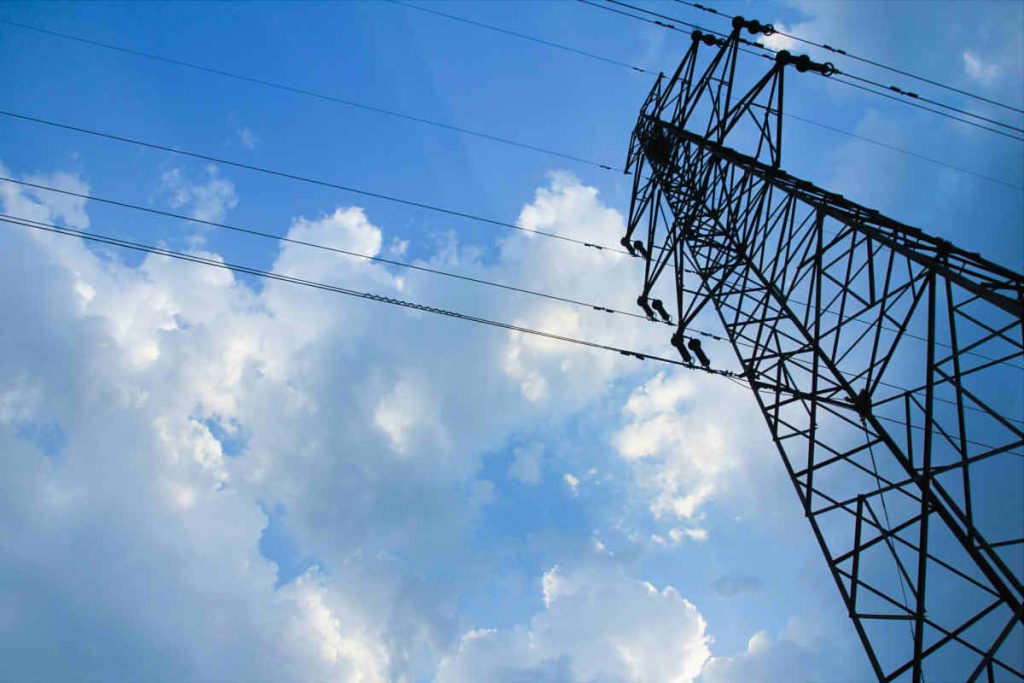
Growth Drivers
Growing Electricity Demand
One of the most significant drivers of the overhead aluminum conductor market is the growing global demand for electricity.. In a constantly expanding world, with a growing population and increased use of electronic devices, The need for efficient generation and transmission of electrical energy is incessant.. This increase in demand drives the expansion of electrical networks, generating a continuous need for aluminum conductors.
Network Modernization
Modernization of existing power grids is another critical factor driving the market. With a focus on energy efficiency and demand responsiveness, many regions of the world are investing in improving their electrical infrastructure. This includes replacing older conductors with more advanced aluminum versions that can transport energy more efficiently and with less loss..
Renewable Energy Growth
The continued growth of renewable energy sources, like solar and wind, is driving the need for overhead aluminum conductors. These energy sources are often located in remote areas or offshore, and aluminum conductors are ideal for transmitting generated energy efficiently to consumption areas.
Efficiency and Sustainability
Aluminum conductors are known for their efficiency in energy transmission., which reduces losses during transportation. Besides, aluminum is a recyclable material, which supports environmental sustainability. These advantages make aluminum conductors attractive options in a world where efficiency and sustainability are increasingly important..
Restrictions
Security issues
Despite its advantages, aluminum conductors may be vulnerable to safety issues. corrosion, falling debris or branches or over power lines and exposure to extreme weather conditions can affect the integrity of the conductors. This requires constant maintenance to ensure the safety and reliability of electrical networks..
Competition and Prices
The aerial aluminum conductor market is highly competitive, with numerous manufacturers and suppliers competing for market shares. This often leads to price competition and pressure on the profit margins of companies in the sector.. Besides, the fluctuation in the price of aluminum, which is the main material in the manufacture of these conductors, can influence production costs.
Changing Regulations
Evolving government regulations and environmental regulations may impact the aluminum conductor industry. Changes in security standards, Energy efficiency and recycling requirements may require adjustments in manufacturing and regulatory compliance, which sometimes generates additional costs.
Future of the Airborne Aluminum Conductor Market
The future of the aerial aluminum conductor market is shaping up to be an amalgamation of exciting challenges and promising opportunities as we move towards a more electrified and sustainable world.. Here are some key trends and insights for this ever-evolving market.:
Innovation in Materials and Design
The aerial aluminum conductor industry is experiencing continued innovation in materials and design. Advanced aluminum alloys are being developed that offer greater mechanical strength and electrical conductivity, allowing the construction of more efficient and long-lasting transmission lines. Besides, Advances in conductor design are allowing the creation of lighter and more flexible cables, making installation easier and reducing maintenance costs.
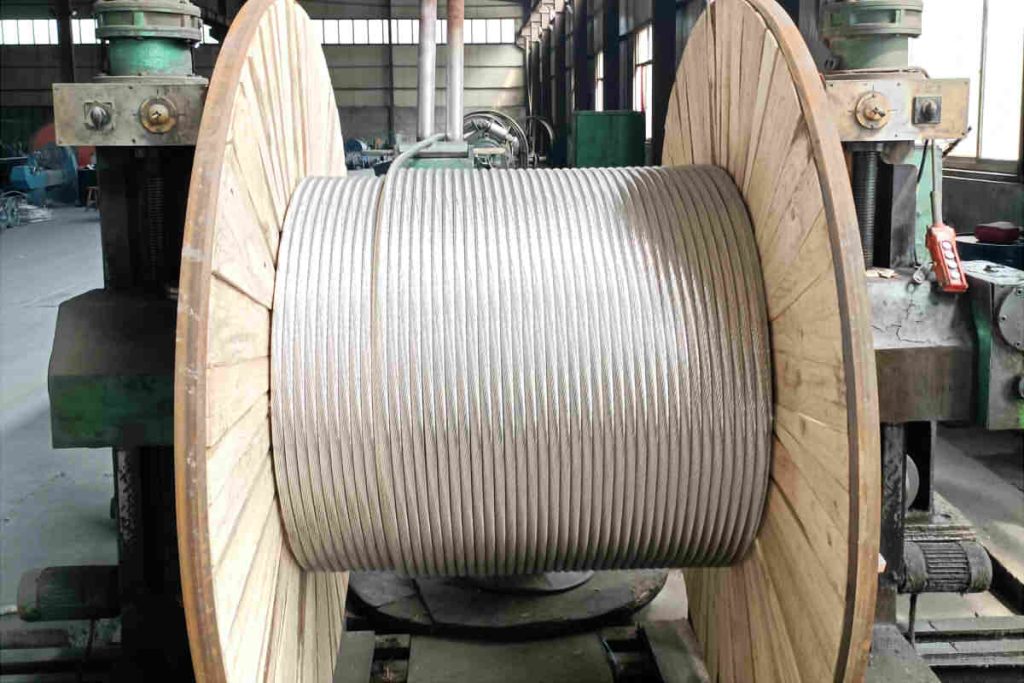
Integration of Smart Technologies
The digitalization of electrical networks is underway around the world. Overhead aluminum conductors are being incorporated into smart transmission and distribution systems that use advanced sensors and communications to monitor and control the grid more efficiently. This not only improves the reliability and responsiveness of networks, but also opens opportunities for active demand management and the integration of renewable energy sources.
Renewable Energy and Electrification
The transition towards cleaner and renewable energy sources is driving the expansion of wind and solar farms, as well as the electrification of sectors such as transportation. This increases the need for high-capacity transmission lines that can efficiently transport power from remote generation areas to consumption centers.. Overhead aluminum conductors play a fundamental role in this infrastructure.
Sustainability and Recycling
Focus on environmental sustainability continues to be an important trend. Aluminum conductors are highly recyclable, making them an environmentally friendly option. Environmental regulations and incentives are expected to further encourage the use of overhead aluminum conductors in transmission and distribution projects.
Resilience and Adaptation to Climate Change
The increase in extreme weather events, such as storms and severe weather events, is leading to a renewed focus on power grid resilience. Overhead aluminum conductors are increasingly designed to withstand harsh weather conditions, contributing to the stability of electrical infrastructure in a world facing growing climate challenges.
In summary, The aerial aluminum conductor market is in a strong position to thrive in the future as demand for electricity grows and power grids evolve toward smarter, more sustainable systems.. Continuous innovation in materials and design, along with adapting to the changing needs of an electrified society, ensures that these conductors remain an essential part of the global electrical infrastructure for decades to come.

